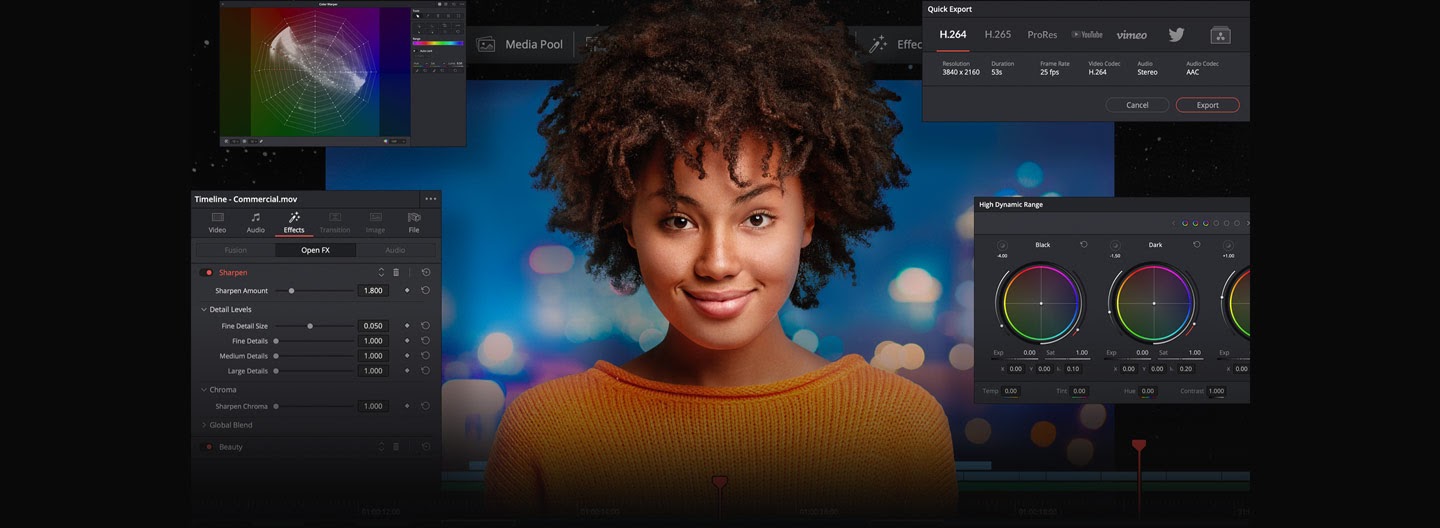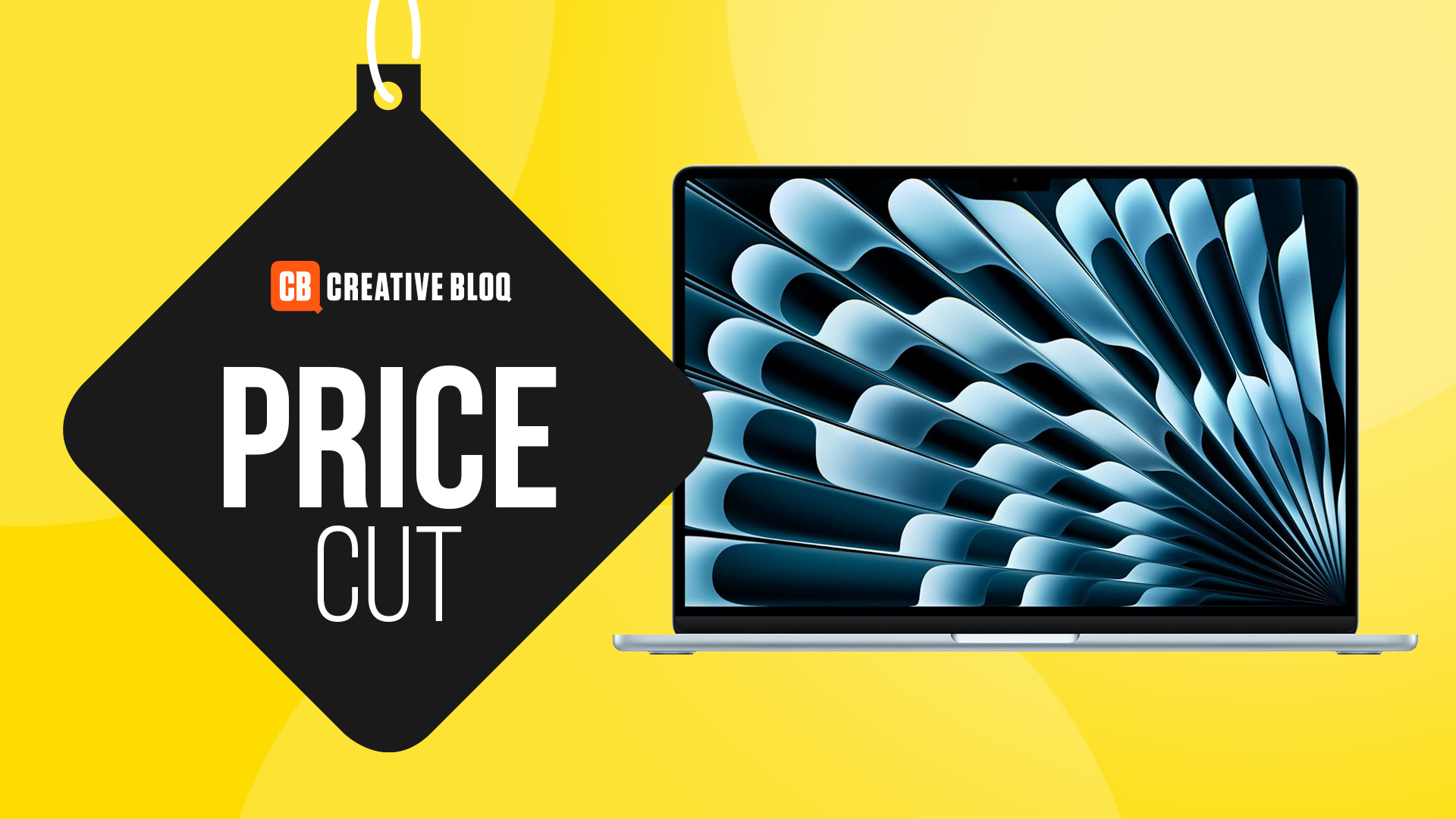Our Verdict
Used by top Hollywood studios, DaVinci Resolve is powerful video editing software. It brings together various post-production solutions in one space and offers advanced tools to delight proficient editors.
For
- One-stop solution for various post-production needs
- Powerful software free of cost
Against
- Needs a powerful system to run
- Steep learning curve
Why you can trust Creative Bloq
We should probably start our DaVinci Resolve review by pointing out that it's currently sitting at the top spot in our guide to the best free video editing software. So if you're simply here to work out if Blackmagic Design's editing tool is worth the download time - it absolutely is. Well, if you're okay with a complicated program.
DaVinci Resolve started off as simply a colour grading tool, but it slowly grew to be a powerful all-in-one edit software, with different functions for editing footage, adding special effects, tweaking sound and, of course, grading colour.
Despite its low, low price of nothing, DaVinci Resolve holds its head high against other industry-leading rivals like Adobe's Premiere Pro and Apple's Final Cut Pro, and especially against lots of free alternatives.
The latest update, from April 2022, brings us to DaVinci Resolve 18, and the main upgrade here is an improvement to cloud collaboration: now it's easier than ever to edit with other people on the same project at once. So you can have your sound mixer, colour grader and visual effects expert all working on a video at once.
This review will build on our existing reviews of DaVinci Resolve, taking into account all the new features as well as the existing ones, (FYI, it's currently the free pick in our best software for editing videos for YouTube guide.)
DaVinci Resolve: All in one
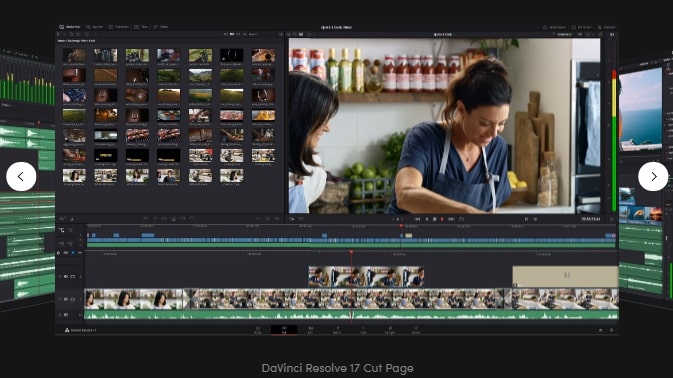
DaVinci Resolve first started as colour correction software, but it evolved over the years and now houses all the post-production tools you’ll need to get a film ready. It offers support for editing, colour correction, visual effects, motion graphics, and audio post-production.
To ensure the whole gamut of high-end tools doesn’t overwhelm users, DaVinci Resolve is split into dedicated workspaces known as pages. Each page gives you tools to handle specific post-production tasks. You’ll find editing on the Cut and Edit pages, colour correction on the Color page, motion graphics and visual effects on the Fusion page, audio on the Fairlight page, and media organisation and output on the Media and Deliver pages. Everything is well organised and you can switch between workspaces with just a click.
This one-stop solution will be appealing to a proficient editor working on a complex project that involves various aspects of post-production.
Some of these functions are best-in-class: color graders around the world attest to how DaVinci is one of the top color correction tools on the market, paid or otherwise. However not all these features are alike: for example Fusion won't exactly give you effects worthy of Adobe's After Effects.
DaVinci Resolve: Audio powerhouse
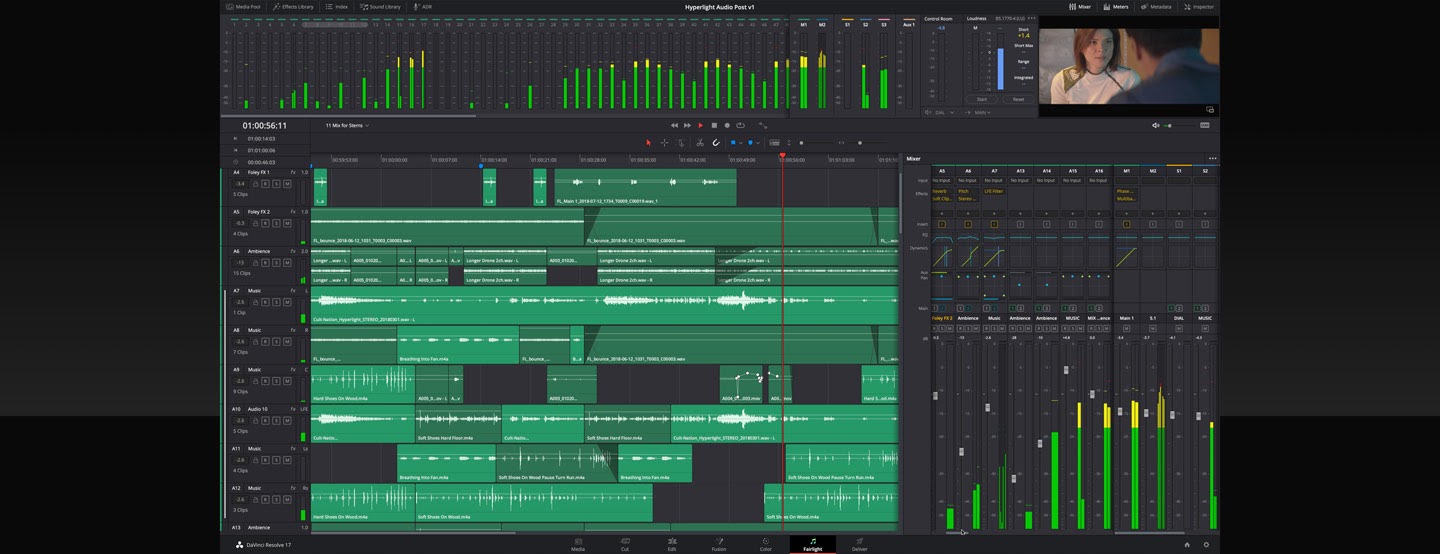
The Fairlight page on DaVinci Resolve is filled with hundreds of advanced audio tools. It’s design makes it easy for new users to get started, but at the same time, it’s incredibly fast and professionals can work on colossal projects, editing up to 2,000 tracks at a time with realtime effects and EQ. It offers familiar keyboard-based editing tools that make it convenient to work with if you’re switching from another system.
One great feature is the Transient detection tool, which automatically finds words and beats and creates markers throughout the clip, making it easy to remove unwanted sections.
DaVinci Resolve brings updates to supported audio standards and formats, with Dolby Atmos, MPEG-H and Auro 3D, and you can even see a space map of your audio mix to see where different sounds lie in the mix.
DaVinci Resolve: Fusion
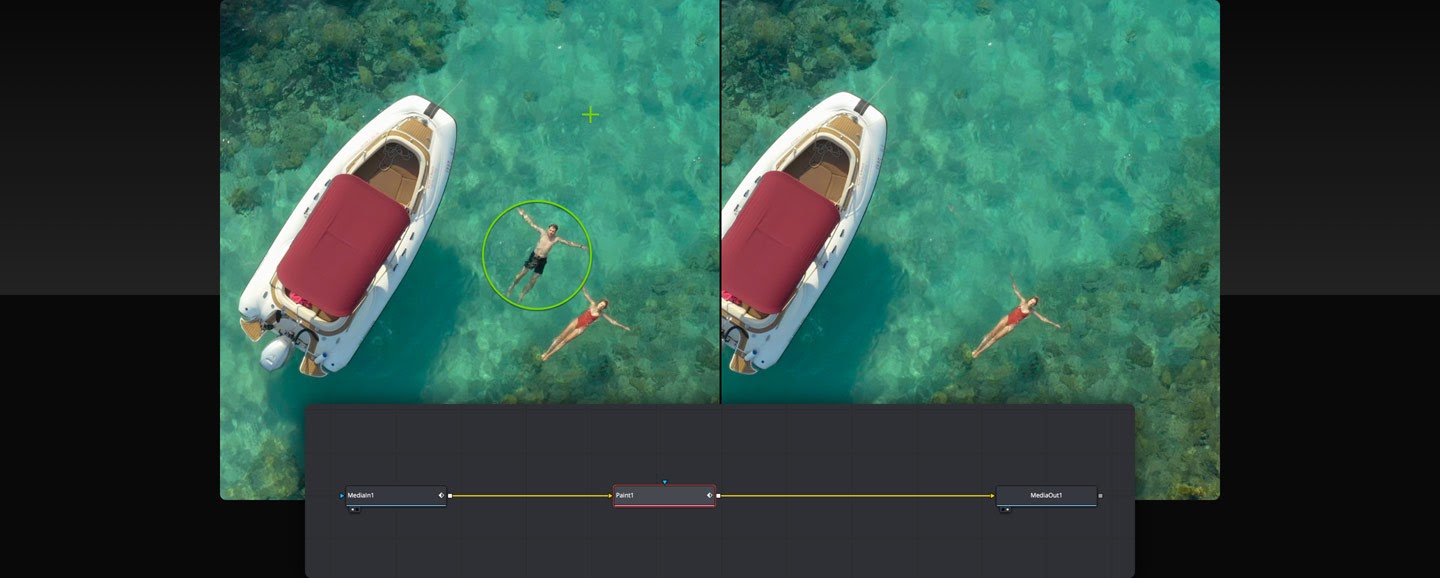
On the Fusion page, you can create visual effects and motion graphics using several 2D and 3D tools. With this, you can get rid of unwanted objects in the frame, place characters into 3D scenes, or even create animated titles.
You're not going to get After Effects levels of VFX, but it's an effective rudimentary alternative.
DaVinci Resolve 18 didn't bring many changes to Fusion, but it did brings some tweaks to improve performance for text and shapes.
DaVinci Resolve: Targeted grading
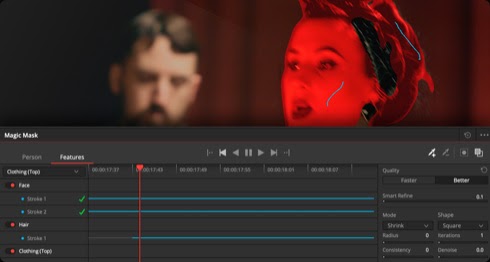
Targeted grading is a brilliant feature that lets you select specific sections of a video and colour correct it. Magic mask uses the DaVinci Neural Engine to isolate and track objects. It automatically creates a mask for an entire person or for specific features such as the face or hands. You also get matte finesse tools, along with tools to add and remove strokes.
DaVinci Resolve 18 brings upgrades to this, so you can track specific objects (an example Blackmagic Design provides is of a t-shirt logo) or animals, vehicles or people in your footage, giving you lots of versatility over your grade.
DaVinci Resolve: Multicam editing
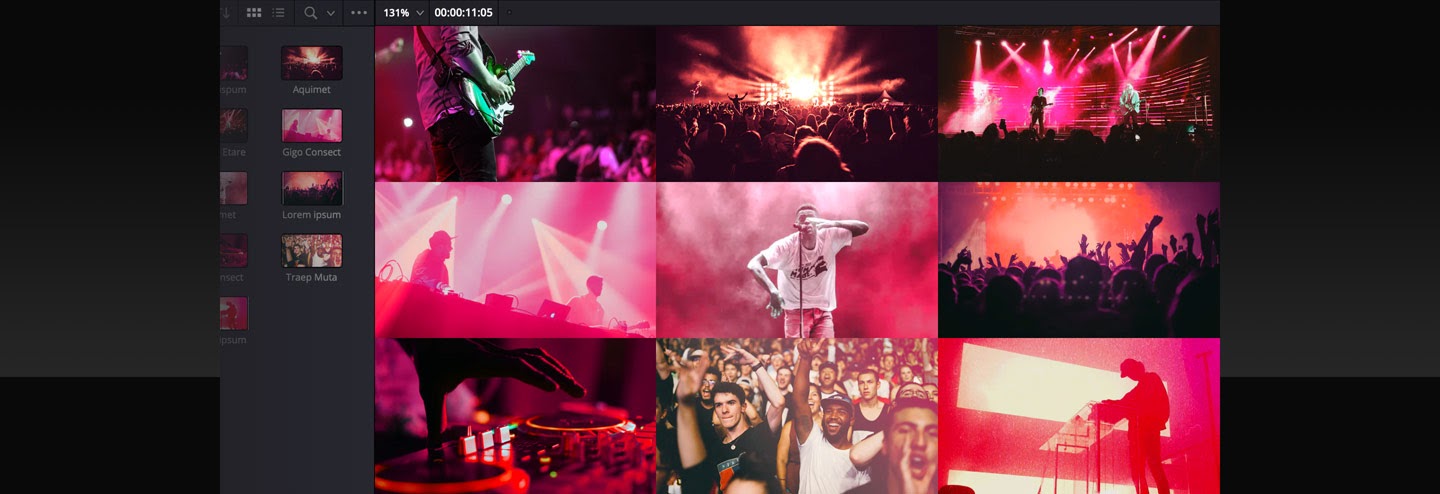
The edit page has an elaborate multicam interface to edit complex footage from multiple cameras. You’ll find support to edit projects that have four, eight, 16, or more cameras, and you can view footage from all the cameras playing back at the same time. There’s high accuracy syncing through audio waveform, you can switch between separate audio or video only options, and you can even trim and colour correct angles independently.
DaVinci Resolve: Scene cut detection

The DaVinci Neural Engine can help you analyse images, find edit points, and cut long clips into multiple shots so that you can colour correct or re-edit them. When you don’t have the original source files, this feature can save you plenty of time since you won’t have to search for edit points manually.
DaVinci Resolve: Multi-user collaboration
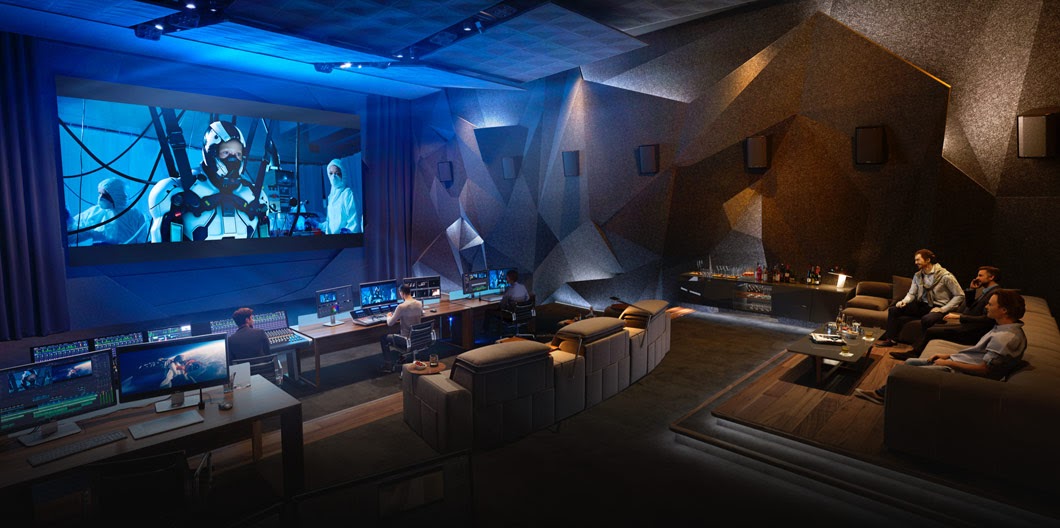
The post-production process typically has a linear workflow where each department does its bit and passes the project on to the next department. With DaVinci Resolve’s multi-user collaboration, users can simultaneously work on the same project. Each artist gets their own workspace with the specific tools they require.
The entire workflow is tied together and managed by a robust multi-user database, universal timeline, and advanced sound and image processing engines. This means editors, colourists, VFX artists, and even sound engineers can work on the same project simultaneously. A workflow like this streamlines post-production and helps you get the project ready expeditiously, even with teammates working from remote locations.
Version 18 of DaVinci Resolve brings lots of improvements here, with cloud hosting making the joint edit process a breeze (though you do need to pay for the servers). You can also share asset libraries this way, and also remotely monitor other editors' process.
DaVinci Resolve: Should I use it?
DaVinci Resolve is powerful video editing software, and version 17 is even more intuitive and streamlined. With its all-in-one post-production solution, wide range of audio, video, and colour-correcting tools, and multi-user collaboration feature, it’s equipped to meet all your editing needs.
Although it’s free and beginners could use it, this is complex software with hundreds of powerful tools and features that can overwhelm a beginner. If you’re looking to do basic editing, there is simpler software available, like Filmora9 or VSDC.
DaVinci Resolve Studio is the paid version and is available for a one-time fee of USD 295. With it you have access to even more advanced features, like support for 3D audio production, the DaVinci Neural Engine to simplify editing, and much more. DaVinci Resolve Studio has a steep learning curve too and is ideal for professionals working on large and intricate projects or those who are seriously considering delving into video editing and other aspects of post-production.
DaVinci Resolve 17: System requirements
Minimum system requirements for macOS:
- Intel Core i7 or AMD Ryzen 7
- macOS 10.14.6 Mojave or later
- 16GB of RAM. 32GB if using Fusion
- 2GB of GPU VRAM
Minimum system requirements for Windows:
- Intel Core i7 or AMD Ryzen 7
- Windows 10 Creators Update
- 16GB of RAM. 32GB if using Fusion
- 2GB of GPU VRAM
Read more:

Thank you for reading 5 articles this month* Join now for unlimited access
Enjoy your first month for just £1 / $1 / €1
*Read 5 free articles per month without a subscription

Join now for unlimited access
Try first month for just £1 / $1 / €1
out of 10
Used by top Hollywood studios, DaVinci Resolve is powerful video editing software. It brings together various post-production solutions in one space and offers advanced tools to delight proficient editors.
Nikshep Myle is a freelance writer and editor. He’s passionate about self-transformation and loves to research, experiment, and write about tech, travel, health, and fitness. When he’s not writing, you’ll find him meditating, traveling, discovering new music, and indulging in adventurous and creative pursuits. His work has appeared in Tech Radar, Tom's Guide, T3 and others.
